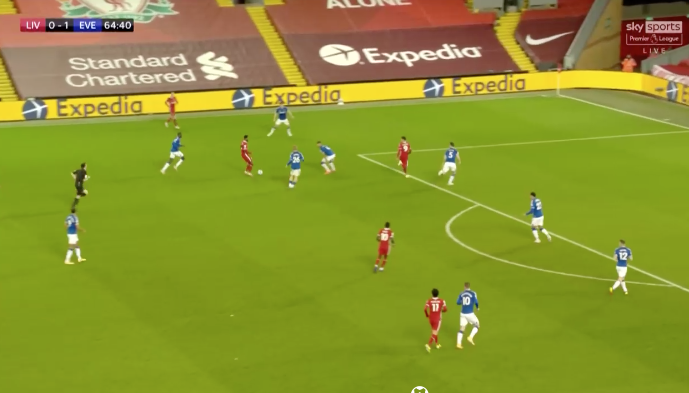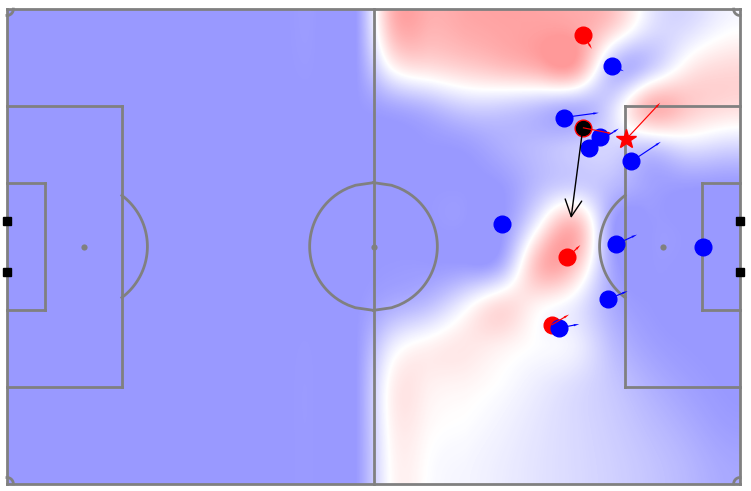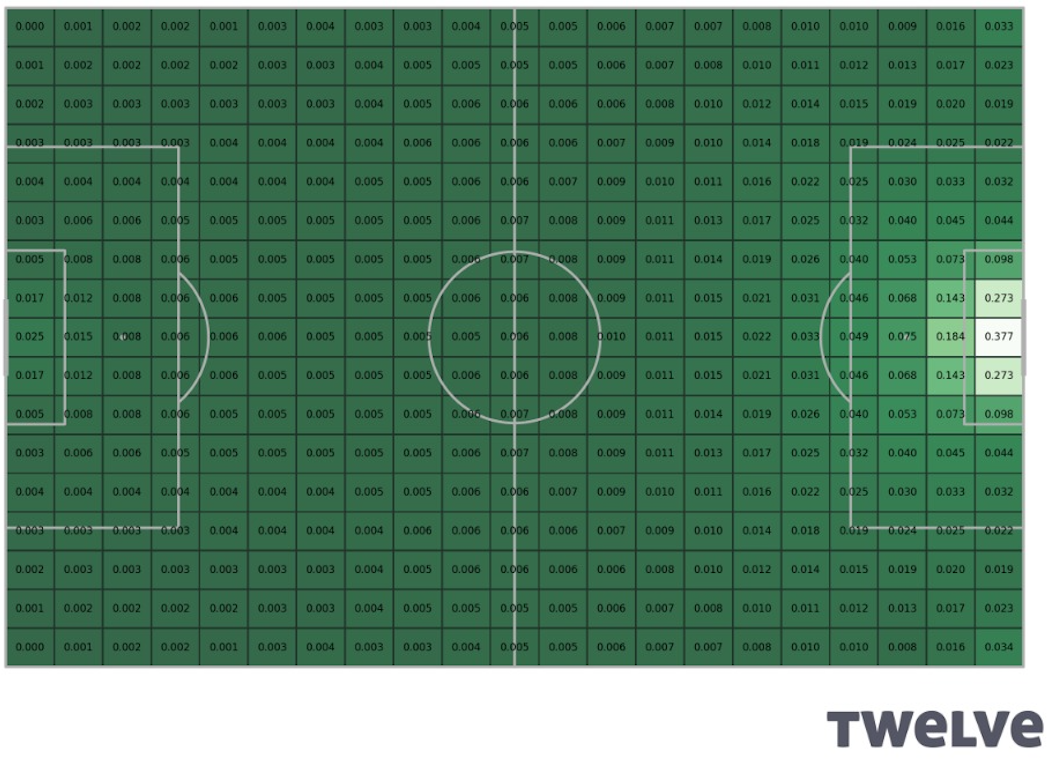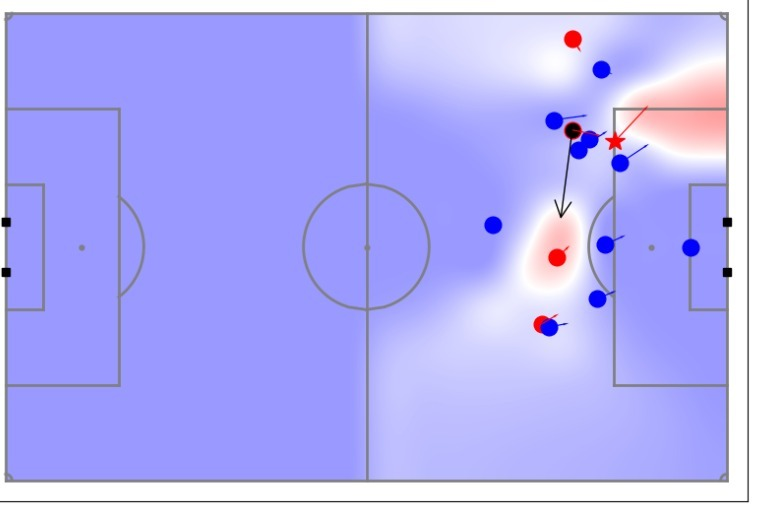Valuing off-ball actions
Introduction video is here.
Valuing attacking runs
One way of evaluating actions using tracking data is to look at the space created at the point an action is performed. The data you have access to for your final project, has freeze-frame data of every action, such that event data is supplemented with tracking data from Skillcorner showing the position and direction of all players near to that action (i.e. in the frame of the TV broadcast footage).
Once the freeze frame data of a pass is created, the key to evaluating a player is looking at the pass alternatives available at that point.
This is a run by Firmino against Everton. He is running out to the edge of the box, dragging a defender with him.

There is nothing exceptional about this particular run. It is just a nice example of something Firmino does non-stop. He is always looking for and finding ways to open up space around the box. Sometimes he gets the ball, sometimes he doesn’t, but either way the movement is there and the defence is disrupted.
To study this run, we first calculate the pitch control (probability of receiving a pass) as illustrated below.

We then multiply it point for point with expected threat (probability of scoring given a pass succeeds) which we saw in lesson 4.

This essentially gives the probability a team will score if the pass is made. This is shown below

Notice that this again gives a natural way in which to measure actions. It is the probability that a goal will be scored if the pass succeeds. In this case, the more central pass to Mane was roughly the same value as the space Firmino (marked with a star) opened up with his run.
Implementing off-ball xT
In this video Laurie Shaw describes how you can value player actions by combining an expected threat style model with a pitch control to investigate the best passing options available to the player on the ball at any moment of a game. Laurie refers to Expected Threat as EPV here, but it is created using the same principles we adopted in lesson 4 for fitting position-based Expected Threat.
Code for this tutorial can be found here.
An interactive visualisation of the Expected Threat used by Laurie in this video can be found here
References
Decomposing the Immeasurable Sport: A deep learning expected possession value framework for soccer is here
Beyond Expected Goals can be downloaded here
Probabilistic movement models and zones of control is here
The right place at the right time: Advanced off-ball metrics for exploiting an opponent’s spatial weaknesses in soccer is here